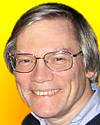
Born 27 Feb 1947. quotes
Alan Harvey Guth is an American theoretical physicist and cosmologist, who pioneered of the Inflationary Model of the expanding Universe. This model explains the exponential growth of the universe mere fractions of a second after the Big Bang, and its continued expansion today.
Alan Harvey Guth is an American theoretical physicist and cosmologist, who pioneered of the Inflationary Model of the expanding Universe. This model explains the exponential growth of the universe mere fractions of a second after the Big Bang, and its continued expansion today.
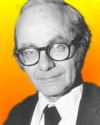
Born 27 Feb 1926. quotes
Canadian-born American neurobiologist, who was a corecipient (with Torsten Nils Wiesel and Roger Wolcott Sperry) of the 1981 Nobel Prize for Physiology or Medicine for mapping the path of nerve impulses from the eye to various centres of the brain. In 1958, Hubel joined Wiesel at Johns Hopkins University, and the two relocated to Harvard in 1959. Their work was made possible by a number of technical advances. From the early 1950s onward it became possible to use microelectrodes to monitor the activity of a single neuron. Their studies were in the area of visual perception, with particular emphasis on the nerve impulses mediating between the retina and the brain. They observed that various nerve cells were responsible for different types of visual stimuli.
Canadian-born American neurobiologist, who was a corecipient (with Torsten Nils Wiesel and Roger Wolcott Sperry) of the 1981 Nobel Prize for Physiology or Medicine for mapping the path of nerve impulses from the eye to various centres of the brain. In 1958, Hubel joined Wiesel at Johns Hopkins University, and the two relocated to Harvard in 1959. Their work was made possible by a number of technical advances. From the early 1950s onward it became possible to use microelectrodes to monitor the activity of a single neuron. Their studies were in the area of visual perception, with particular emphasis on the nerve impulses mediating between the retina and the brain. They observed that various nerve cells were responsible for different types of visual stimuli.
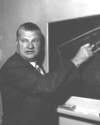
Born 27 Feb 1910; died 21 Dec 1990 at age 80.
Clarence Leonard "Kelly" Johnson was an American aeronautical engineer who introduced introduced innovative designs. While managing Lockheed's secret project division, known as the “Skunk Works,” he contributed to more than 40 airplanes. His early work included the P-38 Lightning fighter (1938) and the Hudson bomber. Later, he developed the fastest supersonic and highest-flying airplanes in the world. The U-2 (1954) was the first plane designed for routine flight above 60,000 feet. The F-104 Starfighter interceptor (1954) was capable of flying at twice the speed of sound, setting world records of 1,400 mph and 103,000 ft altitude.«
Clarence Leonard "Kelly" Johnson was an American aeronautical engineer who introduced introduced innovative designs. While managing Lockheed's secret project division, known as the “Skunk Works,” he contributed to more than 40 airplanes. His early work included the P-38 Lightning fighter (1938) and the Hudson bomber. Later, he developed the fastest supersonic and highest-flying airplanes in the world. The U-2 (1954) was the first plane designed for routine flight above 60,000 feet. The F-104 Starfighter interceptor (1954) was capable of flying at twice the speed of sound, setting world records of 1,400 mph and 103,000 ft altitude.«
Kelly: More Than My Share of It All, by Clarence L. "Kelly" Johnson. - book suggestion.
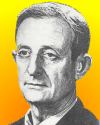
Born 27 Feb 1904; died 19 Dec 1996 at age 92.
Russian physicist who played a key role in the development of the Soviet Union's nuclear weapons and nuclear physics research. Khariton began his career as a researcher in chemical physics, studying combustion and explosion effects. In 1926-28 he studied and worked in Ernest Rutherford's Laboratory in Cambridge, England. Upon his return to the Soviet Union, he directed nuclear research at the Arzamas-16 centre through the 1930's and 1940's. He oversaw the preparation, assembly and detonation of the Soviet atomic bomb, which was built using stolen blueprints of the American plutonium bomb. The first Soviet A-bomb was detonated on 29 Aug 1949 at the Semipalatinsk test range.«
Russian physicist who played a key role in the development of the Soviet Union's nuclear weapons and nuclear physics research. Khariton began his career as a researcher in chemical physics, studying combustion and explosion effects. In 1926-28 he studied and worked in Ernest Rutherford's Laboratory in Cambridge, England. Upon his return to the Soviet Union, he directed nuclear research at the Arzamas-16 centre through the 1930's and 1940's. He oversaw the preparation, assembly and detonation of the Soviet atomic bomb, which was built using stolen blueprints of the American plutonium bomb. The first Soviet A-bomb was detonated on 29 Aug 1949 at the Semipalatinsk test range.«
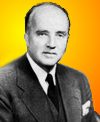
Born 27 Feb 1899; died 31 Mar 1978 at age 79. quotes
Charles Herbert Best was an American-Canadian physiologist who, while 22 years old, assisted Dr Frederick Banting, in Toronto, Canada, with the discovery (1921) of a pancreatic extract - the hormone insulin - that could control diabetes in the dogs they used as test subjects. This led to human diabetics being treated with insulin. Banting (with J.J.R. Macleod) received the 1923 Nobel Prize for Physiology or Medicine. Best was not nominated because he did not receive his medical degree until 1925. However, Banting recognized Best's role by later voluntarily sharing the prize money with him. Best also discovered the vitamin choline and the enzyme histaminase. He was the first to introduce anticoagulants in treatment of thrombosis (blood clots). Best was born in Maine, U.S.A., but for his university studies he moved to Canada, where he remained.«
Charles Herbert Best was an American-Canadian physiologist who, while 22 years old, assisted Dr Frederick Banting, in Toronto, Canada, with the discovery (1921) of a pancreatic extract - the hormone insulin - that could control diabetes in the dogs they used as test subjects. This led to human diabetics being treated with insulin. Banting (with J.J.R. Macleod) received the 1923 Nobel Prize for Physiology or Medicine. Best was not nominated because he did not receive his medical degree until 1925. However, Banting recognized Best's role by later voluntarily sharing the prize money with him. Best also discovered the vitamin choline and the enzyme histaminase. He was the first to introduce anticoagulants in treatment of thrombosis (blood clots). Best was born in Maine, U.S.A., but for his university studies he moved to Canada, where he remained.«
Margaret and Charley: the personal story of Dr. Charles Best, by Henry B. M. Best. - book suggestion.
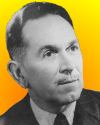
Born 27 Feb 1897; died 2 Apr 1952 at age 55.
Bernard(-Ferdinand) Lyot was a French astronomer who invented the coronagraph (1930), an instrument which allows the observation of the solar corona when the Sun is not in eclipse. Earlier, using his expertise in optics, Lyot made a very sensitive polariscope to study polarization of light reflected from planets. Observing from the Pic du Midi Observatory, he determined that the lunar surface behaves like volcanic dust, that Mars has sandstorms, and other results on the atmospheres of the other planets. Modifications to his polarimeter created the coronagraph, with which he photographed the Sun's corona and its analyzed its spectrum. He found new spectral lines in the corona, and he made (1939) the first motion pictures of solar prominences.«
Bernard(-Ferdinand) Lyot was a French astronomer who invented the coronagraph (1930), an instrument which allows the observation of the solar corona when the Sun is not in eclipse. Earlier, using his expertise in optics, Lyot made a very sensitive polariscope to study polarization of light reflected from planets. Observing from the Pic du Midi Observatory, he determined that the lunar surface behaves like volcanic dust, that Mars has sandstorms, and other results on the atmospheres of the other planets. Modifications to his polarimeter created the coronagraph, with which he photographed the Sun's corona and its analyzed its spectrum. He found new spectral lines in the corona, and he made (1939) the first motion pictures of solar prominences.«
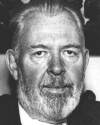
Born 27 Feb 1893; died 24 Dec 1953 at age 60.
American anthropologist who had a marked influence on the development of cultural anthropology. After combat in France during World War I, he received a Ph.D. from Harvard (1925). In the early 1920's he did fieldwork in Polynesia. He introduced the terms "status" and "role" to social science and influenced the development of the culture-and-personality school of anthropology. His works, such as The Study of Man (1936) and The Tree of Culture (1955), are regarded more as popularizations of anthropology than as original scholarship.
American anthropologist who had a marked influence on the development of cultural anthropology. After combat in France during World War I, he received a Ph.D. from Harvard (1925). In the early 1920's he did fieldwork in Polynesia. He introduced the terms "status" and "role" to social science and influenced the development of the culture-and-personality school of anthropology. His works, such as The Study of Man (1936) and The Tree of Culture (1955), are regarded more as popularizations of anthropology than as original scholarship.
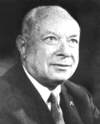
1971 (EB)
Born 27 Feb 1891; died 12 Dec 1971 at age 80. quotes
American inventor who was a pioneer in the development of both radio and television broadcasting. He was the first general manager of RCA and founded the television network NBC (1926). His first job was that of delivery boy, and his life continued to display a rags-to-riches element. He became a wireless operator and met Marconi in 1906. Foreseeing the multiple possibilities of radio, he became commercial manager of American Marconi in 1917, having already predicted that radio would become “a household utility in the same sense as the piano or phonograph”. RCA succeded the Marconi group (1919), and Sarnoff became its general manager (1921) then its president (1930-50). He steering it into the world of television, first black and white, then colour with NBC.
American inventor who was a pioneer in the development of both radio and television broadcasting. He was the first general manager of RCA and founded the television network NBC (1926). His first job was that of delivery boy, and his life continued to display a rags-to-riches element. He became a wireless operator and met Marconi in 1906. Foreseeing the multiple possibilities of radio, he became commercial manager of American Marconi in 1917, having already predicted that radio would become “a household utility in the same sense as the piano or phonograph”. RCA succeded the Marconi group (1919), and Sarnoff became its general manager (1921) then its president (1930-50). He steering it into the world of television, first black and white, then colour with NBC.
David Sarnoff: A Biography David Sarnoff: A Biography, by Eugene Lyons. - book suggestion.
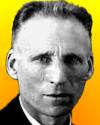
Born 27 Feb 1881; died 2 Dec 1966 at age 85.
Luitzen Egbertus Jan Brouwer was a Dutch mathematician who founded mathematical Intuitionism (a doctrine that views the nature of mathematics as mental constructions governed by self-evident laws). He founded modern topology by establishing, for example, the topological invariance of dimension and the fixpoint theorem. (Topology is the study of the most basic properties of geometric surfaces and configurations.) The Brouwer fixed point theorem is named in his honor. He proved the simplicial approximation theorem in the foundations of algebraic topology, which justifies the reduction to combinatorial terms, after sufficient subdivision of simplicial complexes, the treatment of general continuous mappings.
Luitzen Egbertus Jan Brouwer was a Dutch mathematician who founded mathematical Intuitionism (a doctrine that views the nature of mathematics as mental constructions governed by self-evident laws). He founded modern topology by establishing, for example, the topological invariance of dimension and the fixpoint theorem. (Topology is the study of the most basic properties of geometric surfaces and configurations.) The Brouwer fixed point theorem is named in his honor. He proved the simplicial approximation theorem in the foundations of algebraic topology, which justifies the reduction to combinatorial terms, after sufficient subdivision of simplicial complexes, the treatment of general continuous mappings.
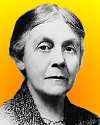
Born 27 Feb 1869; died 22 Sep 1970 at age 101. quotes
American pathologist known for her research on industrial diseases. By actively publicizing the danger to workers' health of industrial toxic substances, she contributed to the passage of workmen's compensation laws and to the development of safer working conditions. In 1911, she accepted an appointment as special investigator for the U.S. Bureau of Labor. These duties led her into field investigations of mines, mills, and smelters. Concentrating at first on lead, the most widely used industrial poison, she compiled statistics dramatically documenting the high mortality and morbidity rates of workers. She later did the same for aniline dyes, picric acid, arsenic, carbon monoxide, and many other industrial poisons. Hamilton died when 101 yrs old.
American pathologist known for her research on industrial diseases. By actively publicizing the danger to workers' health of industrial toxic substances, she contributed to the passage of workmen's compensation laws and to the development of safer working conditions. In 1911, she accepted an appointment as special investigator for the U.S. Bureau of Labor. These duties led her into field investigations of mines, mills, and smelters. Concentrating at first on lead, the most widely used industrial poison, she compiled statistics dramatically documenting the high mortality and morbidity rates of workers. She later did the same for aniline dyes, picric acid, arsenic, carbon monoxide, and many other industrial poisons. Hamilton died when 101 yrs old.
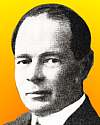
Born 27 Feb 1869; died 12 Sep 1939 at age 70.
American botanist who was a pioneer in the field of plant ecology, especially the concept of dynamic ecology, which he devised in the 1890's through a study of sand dune vegation at the southern end of Lake Michigan. He observed ecological succession, whereby starting with a bare habitat, there is a sequence of biological communities, each providing modification of the habitat to favour successors, until a climax community is established, characteristic of the climatic conditions of the region. His field work there showed that the vegetation at any one point in the system is related to the distance the point lies from the lake, the kind of soil present at the location, and the time period over which seeds and spores have had a chance to germinate.«
American botanist who was a pioneer in the field of plant ecology, especially the concept of dynamic ecology, which he devised in the 1890's through a study of sand dune vegation at the southern end of Lake Michigan. He observed ecological succession, whereby starting with a bare habitat, there is a sequence of biological communities, each providing modification of the habitat to favour successors, until a climax community is established, characteristic of the climatic conditions of the region. His field work there showed that the vegetation at any one point in the system is related to the distance the point lies from the lake, the kind of soil present at the location, and the time period over which seeds and spores have had a chance to germinate.«
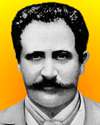
Born 27 Feb 1856; died 21 Mar 1917 at age 61.
German chemist who developed procaine (1905), also known by its tradename as Novocain, while working with the research group of Adolf von Baeyer at the University of Munich. It provided an alternative to cocaine (and its addictive properties), then used as a local anaesthetic. Because Novocain sometimes caused allergic reactions, it was superceded by lidocaine, first created by Nils Löfgren, was introduced in 1943. Chemically, the generically-named procaine is the mono-hydrochloride of para-amino-benzoyldiethyl-amino-ethanol. U.S. patent No. 812,554 was issued to Einhorn on 13 Feb 1906, assigned to the manufacturer. With the outbreak of hostilities in WW I, three American companies were authorized to synthesize procaine under the patent after Congress passed the Trading with the Enemy Act.«
German chemist who developed procaine (1905), also known by its tradename as Novocain, while working with the research group of Adolf von Baeyer at the University of Munich. It provided an alternative to cocaine (and its addictive properties), then used as a local anaesthetic. Because Novocain sometimes caused allergic reactions, it was superceded by lidocaine, first created by Nils Löfgren, was introduced in 1943. Chemically, the generically-named procaine is the mono-hydrochloride of para-amino-benzoyldiethyl-amino-ethanol. U.S. patent No. 812,554 was issued to Einhorn on 13 Feb 1906, assigned to the manufacturer. With the outbreak of hostilities in WW I, three American companies were authorized to synthesize procaine under the patent after Congress passed the Trading with the Enemy Act.«
Baptized 27 Feb 1753; died 26 Mar 1828 at age 75.
British balloonist and chemist who was the first English aeronaut, whose first successful ascent was on 4 Oct 1784, in a hot-air balloon, from Christ Church Meadow, Oxford. He rose to an estimated 3600 feet and travelled six miles. He made a 20-minute hydrogen balloon flight the next month, on 12 Nov 1784. By the time he attempted a crossing of St. George's Channel from Ireland, on 1 Oct 1812, he had made about sixty ascents. Almost reaching land, success eluded him when due to a change of wind he ditched in the sea off Liverpool. After some time in the water, he was rescued by a fishing boat. His two sons, John and Wyndham also took up ballooning. Wyndham succesfully made the Irish Sea crossing from Dublin to Holyhead on 22 Jul 1817. (He fell from his balloon 29 Sep 1824, and died the next day.)«[Obituary gives death on 26 Mar, but 27 Mar is on his tombstone. Shortly before Sadler's first flight, a Scotsman, James Tytler, made a modest ascent from Edinburgh, Scotland, on 27 Aug 1784, and an Italian, Vincent Lunardi, lifted off from London, on 15 Sep 1784.]
British balloonist and chemist who was the first English aeronaut, whose first successful ascent was on 4 Oct 1784, in a hot-air balloon, from Christ Church Meadow, Oxford. He rose to an estimated 3600 feet and travelled six miles. He made a 20-minute hydrogen balloon flight the next month, on 12 Nov 1784. By the time he attempted a crossing of St. George's Channel from Ireland, on 1 Oct 1812, he had made about sixty ascents. Almost reaching land, success eluded him when due to a change of wind he ditched in the sea off Liverpool. After some time in the water, he was rescued by a fishing boat. His two sons, John and Wyndham also took up ballooning. Wyndham succesfully made the Irish Sea crossing from Dublin to Holyhead on 22 Jul 1817. (He fell from his balloon 29 Sep 1824, and died the next day.)«[Obituary gives death on 26 Mar, but 27 Mar is on his tombstone. Shortly before Sadler's first flight, a Scotsman, James Tytler, made a modest ascent from Edinburgh, Scotland, on 27 Aug 1784, and an Italian, Vincent Lunardi, lifted off from London, on 15 Sep 1784.]
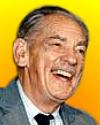
Died 27 Feb 1998 at age 92 (born 18 Apr 1905).
American pharmacologist was a medical research pioneer who was awarded a share of the Nobel Prize for Physiology or Medicine in 1988 (with Gertrude B. Elion and Sir James W. Black) for development of drugs for several major diseases. In the 1950s, he and colleague Elion developed thioguanine and 6-mercaptopurine, that treated leukemia, and in 1957, azathioprine, used in treating severe rheumatoid arthritis and other autoimmune disorders. Their drug allopurinol was effective treatment for gout. Other important drugs they developed include pyrimethamine, an antimalarial agent; trimethoprim, a treatment for urinary and respiratory tract infections; and acyclovir, the first effective treatment for viral herpes.«
American pharmacologist was a medical research pioneer who was awarded a share of the Nobel Prize for Physiology or Medicine in 1988 (with Gertrude B. Elion and Sir James W. Black) for development of drugs for several major diseases. In the 1950s, he and colleague Elion developed thioguanine and 6-mercaptopurine, that treated leukemia, and in 1957, azathioprine, used in treating severe rheumatoid arthritis and other autoimmune disorders. Their drug allopurinol was effective treatment for gout. Other important drugs they developed include pyrimethamine, an antimalarial agent; trimethoprim, a treatment for urinary and respiratory tract infections; and acyclovir, the first effective treatment for viral herpes.«
Died 27 Feb 1997 at age 88 (born 20 Aug 1908). quotes
American sociologist and demographer who was a world-renowned expert on population trends; he coined the terms population explosion and zero population growth and promoted methods of bringing the latter about. His specific studies of American society led him to work on a general science of world society, based on empirical analysis of each society in its habitat. Later, however, he came to be concerned about low birthrates in developed countries, fearing a shortage of educated leaders.
American sociologist and demographer who was a world-renowned expert on population trends; he coined the terms population explosion and zero population growth and promoted methods of bringing the latter about. His specific studies of American society led him to work on a general science of world society, based on empirical analysis of each society in its habitat. Later, however, he came to be concerned about low birthrates in developed countries, fearing a shortage of educated leaders.
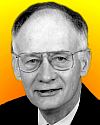
Died 27 Feb 1997 at age 59 (born 7 Aug 1937).
American forensic anthropologist who examined and identified the skeletons of a number of historical figures, including Tsar Nicholas II and other members of the Romanov family killed in 1918 by the Bolsheviks, Vietnam MIAs, conquistador Francisco Pizarro, and in 1994 helped convict Byron De La Beckwith of the 1963 murder of civil rights leader Medgar Evers. At the University of Florida, the C.A. Pound Human Identification Laboratory was created through Maples' energetic fundraising. This sophisticated, unique facility, dedicated to forensic anthropology opened its doors in 1986. Maples wrote Dead Men Do Tell Tales (1994, with Michael Browning).
American forensic anthropologist who examined and identified the skeletons of a number of historical figures, including Tsar Nicholas II and other members of the Romanov family killed in 1918 by the Bolsheviks, Vietnam MIAs, conquistador Francisco Pizarro, and in 1994 helped convict Byron De La Beckwith of the 1963 murder of civil rights leader Medgar Evers. At the University of Florida, the C.A. Pound Human Identification Laboratory was created through Maples' energetic fundraising. This sophisticated, unique facility, dedicated to forensic anthropology opened its doors in 1986. Maples wrote Dead Men Do Tell Tales (1994, with Michael Browning).
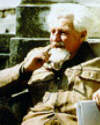
Died 27 Feb 1989 at age 85 (born 7 Nov 1903). quotes
Austrian zoologist, who founded modern ethology (the study of animal behaviour by means of comparative zoological methods). He was known affectionately by his pupils as the “father of the grey geese” which he studied. His ideas revealed how behavioral patterns may be traced to an evolutionary past, and he was also known for his work on the roots of aggression. He shared the 1973 Nobel Prize for Physiology and Medicine for developing a unified, evolutionary theory of animal and human behaviour. He was also a vehement environmentalist, criticizing prodigality and believed that nature protection is necessary for the preservation of humanity. Even late in life, he participated in demonstrations even if in conflict with government and authorities.
Austrian zoologist, who founded modern ethology (the study of animal behaviour by means of comparative zoological methods). He was known affectionately by his pupils as the “father of the grey geese” which he studied. His ideas revealed how behavioral patterns may be traced to an evolutionary past, and he was also known for his work on the roots of aggression. He shared the 1973 Nobel Prize for Physiology and Medicine for developing a unified, evolutionary theory of animal and human behaviour. He was also a vehement environmentalist, criticizing prodigality and believed that nature protection is necessary for the preservation of humanity. Even late in life, he participated in demonstrations even if in conflict with government and authorities.
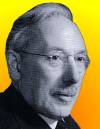
Died 27 Feb 1963 at age 75 (born 21 Mar 1887).
Russian-British biochemist who discovered cytochromes, as enzymes critical to the cell's use of oxygen (1923). His career began as an entomologist studying the life cycles of flies. While studying the absorption spectrum of the muscles of the horse botfly, that he noticed four absoption bands that disappeared when the cell suspension was shaken in air, but reappeared afterwards. He had found a respiratory enzyme. He named it cytochrome, and began a thorough investigation of its role in cellular respiration. Like haemoglobin, the cytochrome enzyme contains iron. Cytochrome is a pigment found in some cells, such as bacteria and yeast. He studied also catalase and peroxidase which are also iron-containing enzymes with a role involving oxygen.
Russian-British biochemist who discovered cytochromes, as enzymes critical to the cell's use of oxygen (1923). His career began as an entomologist studying the life cycles of flies. While studying the absorption spectrum of the muscles of the horse botfly, that he noticed four absoption bands that disappeared when the cell suspension was shaken in air, but reappeared afterwards. He had found a respiratory enzyme. He named it cytochrome, and began a thorough investigation of its role in cellular respiration. Like haemoglobin, the cytochrome enzyme contains iron. Cytochrome is a pigment found in some cells, such as bacteria and yeast. He studied also catalase and peroxidase which are also iron-containing enzymes with a role involving oxygen.
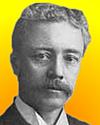
Died 27 Feb 1951 at age 91 (born 30 Jul 1859). quotes
American physicist and administrator who is credited with making the first X-ray photograph in the U.S. on about 12 Jan 1896, while he was a professor of physics and astronomy at Davidson College, North Carolina. Shortly after Röntgen's announcement of his discovery of X-rays, Smith copied the technique. Smith made an X-ray photograph of a bullet he had shot into the hand of a cadaver, that was published in the Charlotte Observer (27 Feb 1896). Shortly thereafter, he made the first clinical use of X-rays to locate a thimble stuck in a young girl's throat, enabling its surgical removal. Smith became the college president in 1901 and oversaw adding a new science building. He established an electric light plant. Near the end of WW I, his idea to inform the German population of President Wilson's peace plans was adopted. Millions of messages carried by gas-filled balloons were released from France into the winds over Germany.«
American physicist and administrator who is credited with making the first X-ray photograph in the U.S. on about 12 Jan 1896, while he was a professor of physics and astronomy at Davidson College, North Carolina. Shortly after Röntgen's announcement of his discovery of X-rays, Smith copied the technique. Smith made an X-ray photograph of a bullet he had shot into the hand of a cadaver, that was published in the Charlotte Observer (27 Feb 1896). Shortly thereafter, he made the first clinical use of X-rays to locate a thimble stuck in a young girl's throat, enabling its surgical removal. Smith became the college president in 1901 and oversaw adding a new science building. He established an electric light plant. Near the end of WW I, his idea to inform the German population of President Wilson's peace plans was adopted. Millions of messages carried by gas-filled balloons were released from France into the winds over Germany.«
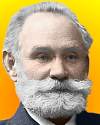
Died 27 Feb 1936 at age 86 (born 27 Sep 1849). quotes
Russian physiologist, who was awarded the 1904 Nobel Prize in Physiology or Medicine. He pioneered the investigation that he named the “conditioned reflex.” In the experiment which made him famous, he trained a hungry dog to associate the sound of a bell with receiving food. Thereafter, the dog would salivate on hearing the bell alone. This work began as merely a study in digestion, with a series of experiments on dogs to investigate how digestive secretions are regulated. He identified three stimuli that caused dogs to begin to salivate: seeing, smelling, or tasting food. He realized, digestion is partly controlled by sensory stimuli. In 1903, Pavlov published his results on this learned— “conditioned reflex,” (as opposed to an innate reflex, like a reaction to pain). He worked actively in the lab until his death at age 87.«[DSB gives birth date as 27 Sep 1849. EB gives Old Style: 14 Sep 1849 (New Style: 26 Sep 1849).]
Russian physiologist, who was awarded the 1904 Nobel Prize in Physiology or Medicine. He pioneered the investigation that he named the “conditioned reflex.” In the experiment which made him famous, he trained a hungry dog to associate the sound of a bell with receiving food. Thereafter, the dog would salivate on hearing the bell alone. This work began as merely a study in digestion, with a series of experiments on dogs to investigate how digestive secretions are regulated. He identified three stimuli that caused dogs to begin to salivate: seeing, smelling, or tasting food. He realized, digestion is partly controlled by sensory stimuli. In 1903, Pavlov published his results on this learned— “conditioned reflex,” (as opposed to an innate reflex, like a reaction to pain). He worked actively in the lab until his death at age 87.«[DSB gives birth date as 27 Sep 1849. EB gives Old Style: 14 Sep 1849 (New Style: 26 Sep 1849).]
Ivan Pavlov: Exploring the Animal Machine, by Daniel Todes. - book suggestion.
Died 27 Feb 1913 at age 58 (born 28 Sep 1854).
English zoologist, a grandnephew of the geologist Adam Sedgwick, who is best known for his researches on the wormlike organism Peripatus, which he recognized as the zoologically important connecting link between the Annelida, or segmented worms, and the Arthropoda, such as crabs, spiders, and insects.
English zoologist, a grandnephew of the geologist Adam Sedgwick, who is best known for his researches on the wormlike organism Peripatus, which he recognized as the zoologically important connecting link between the Annelida, or segmented worms, and the Arthropoda, such as crabs, spiders, and insects.
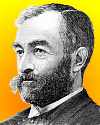
Died 27 Feb 1906 at age 71 (born 22 Aug 1834). quotes
American astronomer, physicist and aeronaut who built the first heavier-than-air flying machine to achieve sustained flight. He launched his Aerodrome No.5 on 6 May 1896 using a spring-actuated catapult mounted on top of a houseboat on the Potomac River, near Quantico, Virginia. He also researched the relationship of solar phenomena to meteorology.« more
American astronomer, physicist and aeronaut who built the first heavier-than-air flying machine to achieve sustained flight. He launched his Aerodrome No.5 on 6 May 1896 using a spring-actuated catapult mounted on top of a houseboat on the Potomac River, near Quantico, Virginia. He also researched the relationship of solar phenomena to meteorology.« more
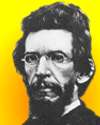
Died 27 Feb 1867 at age 46 (born 20 Jul 1820). quotes
American statistician and editor, who is regarded as a pioneer of economic statistics for the U.S. Census Office. As a young man, he moved in 1820 to New Orleans, and there began publishing his periodical, DeBow’s Review, on business and the economy. By 1848, he became professor of commerce and statistics at the University of Louisiana, and was appointed some months later to head Louisiana’s new Bureau of Statistics. President Franklin Pierce turned to DeBow to be Superintendent (1853-55) of the Seventh U.S. Census, for which he produced a full report, and also Statistical View of the United States, a summary subsequently known as the Compendium, which was popular for the usefulness of its economic statistics.«
American statistician and editor, who is regarded as a pioneer of economic statistics for the U.S. Census Office. As a young man, he moved in 1820 to New Orleans, and there began publishing his periodical, DeBow’s Review, on business and the economy. By 1848, he became professor of commerce and statistics at the University of Louisiana, and was appointed some months later to head Louisiana’s new Bureau of Statistics. President Franklin Pierce turned to DeBow to be Superintendent (1853-55) of the Seventh U.S. Census, for which he produced a full report, and also Statistical View of the United States, a summary subsequently known as the Compendium, which was popular for the usefulness of its economic statistics.«
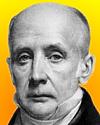

Donkin/Fourdrinier paper-making machine (1820)
English mechanical engineer and inventor. After the Fourdrinier brothers imported from France a prototype machine for making paper in continuous lengths (1802), Donkin assisted with design improvements and to establish a factory. By 1808, Donkin acquired the works and a license to manufacture the paper-making machines. He also developed printing machinery and invented the composition roller used in printing. Donkin held other patents on gearing, steel pens, paper-making and railway wheels. He also worked on the preservation of food in airtight containers (1813), revolution counters and improved accurate screw threads for graduating mathematical scales. Three more generations of his family included engineers.« more
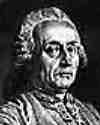
Died 27 Feb 1794 at age 85 (born 8 Oct 1708). quotes
Jean-Rodolphe Perronet was a French civil engineer who was renowned for his stone-arch bridges, especially the Pont de la Concorde, Paris. During construction of a bridge at Mantes in 1763, Perronet made the discovery that the horizontal thrust of a series of elliptical arches was passed along to the abutments at the ends of the bridge. Thus he was able to build extremely flat arches that were supported during construction by timbering (falsework) and mounted on very slender piers, which widened the waterway for navigation and reduced scour from the current.
Jean-Rodolphe Perronet was a French civil engineer who was renowned for his stone-arch bridges, especially the Pont de la Concorde, Paris. During construction of a bridge at Mantes in 1763, Perronet made the discovery that the horizontal thrust of a series of elliptical arches was passed along to the abutments at the ends of the bridge. Thus he was able to build extremely flat arches that were supported during construction by timbering (falsework) and mounted on very slender piers, which widened the waterway for navigation and reduced scour from the current.
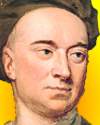
Died 27 Feb 1735 at age 67 (baptized 29 Apr 1667). quotes
Scottish physician, mathematician and essayist who published Of the Laws of Chance (1692), the first work on probability published in English, being his translation of a work by Huygens to which he added further games of chance. In 1710, he published a paper discussing the slight excess of male births over female births since 1629; it was perhaps the first application of probability to social statistics and included the first formal test of significance. As a political satirist, he wrote a series of pamphlets featuring the character John Bull that became an iconic Englishman. Arbuthnot joined with Jonathan Swift, Alexander Pope, and John Gay in founding the famous Scriblerus Club. From 1705 he was physician to Queen Anne until her death in 1714.« more
Scottish physician, mathematician and essayist who published Of the Laws of Chance (1692), the first work on probability published in English, being his translation of a work by Huygens to which he added further games of chance. In 1710, he published a paper discussing the slight excess of male births over female births since 1629; it was perhaps the first application of probability to social statistics and included the first formal test of significance. As a political satirist, he wrote a series of pamphlets featuring the character John Bull that became an iconic Englishman. Arbuthnot joined with Jonathan Swift, Alexander Pope, and John Gay in founding the famous Scriblerus Club. From 1705 he was physician to Queen Anne until her death in 1714.« more
John Arbuthnot: Mathematician and Satirist, by Lester M. Beattie. - book suggestion.
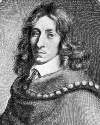
Died 27 Feb 1706 at age 85 (born 31 Oct 1620). quotes
English country gentleman, diarist, author of some 30 books on the fine arts, forestry, and religious topics. A lifelong member of the Royal Society, he produced for the commissioners of the navy the book, Sylva, or a Discourse of Forest-trees, and the Propagation of Timber (1664), encouraging estate owners to plant timber for the navy. It was the first important work on conservation, published at a time when English forests were being stripped of timber to build ships for the expanding British Navy. The book gave a description of the various kinds of trees, their cultivation, uses, and advice on pruning, insect control, wound treatment, and transplanting. The study, with numerous modifications, had gone through 10 editions by 1825.
English country gentleman, diarist, author of some 30 books on the fine arts, forestry, and religious topics. A lifelong member of the Royal Society, he produced for the commissioners of the navy the book, Sylva, or a Discourse of Forest-trees, and the Propagation of Timber (1664), encouraging estate owners to plant timber for the navy. It was the first important work on conservation, published at a time when English forests were being stripped of timber to build ships for the expanding British Navy. The book gave a description of the various kinds of trees, their cultivation, uses, and advice on pruning, insect control, wound treatment, and transplanting. The study, with numerous modifications, had gone through 10 editions by 1825.
In 1947, the first closed-circuit broadcast of a surgical operation showed procedures to observers in classrooms. Dr. Alfred Blalock, at Johns Hopkins Hospital, Baltimore, Md., demonstrated two operations on the heart. Two more heart operations were also seen, and one on nerves of the spine.
In 1942, J.S. Hey discovered radio emissions from the Sun.
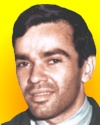
(10 Sep 1939)
In 1940, Martin Kamen co-discovered the synthesis of isotope carbon-14 with Samuel Ruben, by blasting a graphite target with sub-atomic particles from the 60-inch cyclotron at the Radiation Laboratory, University of California, Berkeley. Kamen had spent three days and nights without sleep. As he staggered home, unkempt, red-eyed with a three-day growth of beard, he was picked up by the police searching for an escaped convict. He was taken for interrogation as a suspected killer, but witnesses cleared him within hours. An unfortunate delay to inspecting the results of the revolutionary experiment. Subsequent research by Willard Libby, made study of carbon-14 content important in dating organic materials.«
Hot Carbon: Carbon-14 and a Revolution in Science, by John Marra. - book suggestion.
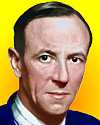
In 1932, in a Letter to the Editor published in Nature, Dr. James Chadwick. announced the “Possible Existence of a Neutron,” detected during two weeks of inspired experimentation. This was the third building block of the atom, an electrically neutron particle, with a mass approximately equal to the proton. He published his proof in a second paper published three months later, in May 1932. It was for the discovery of the neutron that Chadwick was awarded the 1935 Nobel Prize in Physics. In his experiment, Chadwick could not detect neutrons directly, but instead measured the energy of recoil protons from neutron-proton reactions in a paraffin block. The neutron energy was calculated from the result of the head-on elastic scattering.«
The Neutron and the Bomb: A Biography of Sir James Chadwick, by Andrew P. Brown. - book suggestion.
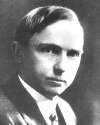
Shapley
In 1924, Harlow Shapley wrote back in reply to the letter from Edwin Hubble which presented the measurement of 300,00 parsecs as the distance to the Andromeda nebula. That was the first proof that the nebula was far outside the Milky, in fact, a separate galaxy. When Shapley had debated Heber Curtis on 26 Apr 1920, he presented his firm, life-long conviction that all the Milky Way represented the known universe (and, for instance, the Andromeda nebula was part of the Milky Way.) On receipt of the letter, Shapley told Payne-Gaposchkin and said “Here is the letter that has destroyed my universe.” In his reply, Shapley said sarcastically that Hubble's letter was “the most entertaining piece of literature I have seen for a long time.” Hubble sent more data in a paper to the AAS meeting, read on 1 Jan 1925.«
Edwin Hubble, The Discoverer of the Big Bang Universe, by Aleksandr Sergeevich Sharov, Igor Dmitrievich Novikov. - book suggestion.
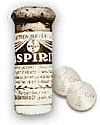
In 1900, German chemist Felix Hoffmann was issued a U.S. patent for “Acetyl Salicylic Acid” (No. 644,077). It was assigned to the Farben-Fabriken of Elberfeld Company, of New York. Hoffmann had discovered the chemical compound on 10 Aug 1897 while a researcher at the Bayer company. It was marketed as Apirin, the familiar pain reliever, which at the time was a trademarked name. It was first sold in Germany in powder form, from 1 May 1899, and later in the more convenient tablet form, from 1 Jan 1915.
Aspirin: The Remarkable Story of a Wonder Drug, by Diarmuid Jeffreys. - book suggestion.
In 1892, “Electricity From Wind” was reported in the Cincinnati Enquirer, from the Philadelphia Record. Is said that “Owing to the comparative scarcity of water-power in many parts of England” to generate electricty, “attention has been given to wind power, of which the country is well supplied. A small experimental plant has been in operation at a flour-mill near London, the wind-mill supplying sufficient power to charge a storage battery, from which a number of arc and incandescent lamps were lighted nightly. Although the current obtained was small,” the experiment demonstrated the possibilities. The article suggested the use of wind-powered electricity generators at country houses on elevated ground. The article represents one example, not necessarily the first. Edison's incandescent lamp dates from 1879. Steam-powered central generating began in New York City in 1882.«
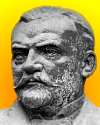
Fahlberg
In 1879, saccharin, the artificial sweetener, was discovered by Constantin Fahlberg, while he was researching coal tar compounds for Ira Remsen at Johns Hopkins University in Baltimore, Maryland With hands unwashed since leaving his laboratory work, during a meal, he accidentally discovered its intensely sweet taste when his fingers touched his lips. He subsequently obtained patents on its synthesis, and with his uncle, Dr. Adolf List, started a factory to produce and market it. Fahlberg became wealthy by taking the outcome of a laboratory experiment and pursuing a commercial path for it.«
more
Empty Pleasures: The Story of Artificial Sweeteners from Saccharin to Splenda, by Carolyn de la Pena. - book suggestion.
In 1867, Dr. William G. Bonwill of Philadelphia, Penn., invented the dental mallet while watching a telegraph key sounder operate in a Philadelphia hotel.
In 1813, first federal vaccination legislation enacted.




